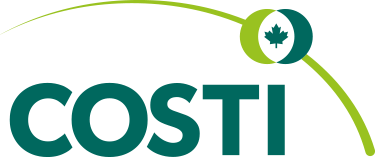Gambling and Problem Gambling in the Italian Canadian Community – Development of a Model of Intervention
The Problem Gambling Service at COSTI Family and Mental Health Services was launched in March 2000 as a pilot-project in partnership with the Centre for Addiction and Mental Health, Problem Gambling Service. The development and implementation of the Problem Gambling program at COSTI was in response to the need identified by clients at the Centre accessing other programs (i.e. generic family counselling, mental health, and family violence programs). The need identified by clients of the Centre was to provide a program that would assist Italian-Canadian individuals and families affected by, and struggling with, problem gambling and gambling-related issues.
The information presented in the Model of Intervention for the Italian Community report, was based on the clinical work conducted directly with clients who accessed services through the Problem Gambling program at COSTI over the course of a three-year pilot project.
Purpose of Report
There is little cross-cultural research in the area of gambling and problem gambling, and no existing literature specifically examines the treatment of problem gambling in ethno-cultural communities. The report explores perceptions of gambling and problem gambling in the Italian-Canadian community and, in addition, a model of intervention was developed addressing the unique experiences, challenges and implications encountered in a clinical setting. A primary goal of this report was to examine the mainstream harm-reduction treatment model and discuss how the model was tailored and adapted to meet the needs of the Italian-Canadian community.
The initial section of the report provides an overview of the existing literature on gambling and problem gambling. More specifically, current definitions of gambling and problem gambling, prevalence rates of problem gambling in Ontario, the impact of problem gambling on families, and an overview of the conceptual models or frameworks used for understanding and treating problem gambling in mainstream treatment programs are presented. The role of culture and the challenges of delivering culturally competent services were examined. Finally, as to the objective of the report, a culturally sensitive and culturally appropriate model of intervention for the treatment of problem gambling was highlighted. Furthermore, the model may function as a resource for service providers interested in understanding the unique experience of providing culturally sensitive and culturally appropriate gambling treatment in an ethno-specific community.
Intervention Process and Treatment Component
In order to understand the Italian culture's family system and the interactional dynamics existing within the system, an historical overview of the Italian experience in Canadian society was outlined (including their roots in North America, experience as newly arrived immigrants, and characteristics of the traditional high-context Italian culture and family). In order to understand the structure and interactional dynamics of a particular family system, it is important for clinicians to consider and examine the cultural values and belief systems embedded within the ethnic culture and how such traditions transcend from generation to generation.
In relation to perceptions of gambling and problem gambling:
- The Italian-Canadian community views gambling as an enjoyable recreational activity and as an acceptable past-time.
- In terms of gender differences, problem gambling was perceived as unacceptable and shameful for women more so than men.
- Female clients attributed feelings of shame and guilt to problem gambling when female was the identified client.
- Significantly high degree of anger and shock expressed by family when mother was the identified client.
- Mental health issues (primarily anxiety and mood disorders) was evidenced as co-occurring with male problem gambling.
- Losses accrued as a result of problem gambling were accompanied by feelings of “failure” for men for not meeting up to expectations set upon the male provider and breadwinner by self, family and culture.
In terms of the therapeutic relationship:
- Individual and/or family must feel or gain a sense of connectedness to the therapist so that a secure or safe system is created wherein the therapist has joined the family in becoming the vehicle for change.
- The goal of the clinician must be to gain the trust of the family.
- Conducting home-visits and accepting phone calls between sessions are considered elements of the engaging process.
- Modify the manner in which information pertaining to the assessment is collected (i.e., assessment tools such as the South Oaks Gambling Scale (SOGS), Inventory of Gambling Situations (IGS), and the Canadian Problem Gambling Index (CPGI), if a therapeutic rapport or alliance has yet been established.
In relation to the treatment component of the program:
- The “mainstream” harm-reduction model/approach was developed within the context of North American culture that is primarily urban, individualistic, and literate. On the-other-hand, the roots of the Italian culture are primarily urban, individualistic, and literate. All aspects of the intervention process must be examined with a cultural lens given these realities.
- Homework in the form of written materials and exercises are not useful or realistic process methods of demonstrating concepts and ideas given the culture is predominantly an oral culture (first generation Italian-Canadians).
- Incorporating story-telling, analogies, and keeping mental logs have demonstrated to be useful.
Public Education and Community Awareness
The public education component of the Problem Gambling program has been vital in educating and raising awareness of gambling and problem gambling within the Italian-Canadian community. Awareness-raising workshops were delivered to clients and staff groups of various social and treatment centres within the community (i.e. senior residences, drug and alcohol treatment centres, community centres, and social clubs). The program's public education initiatives successfully used the media as a powerful medium or forum for delivering outreach and in generating clients to come forward in identifying a gambling problem and to, ultimately, seek treatment services at COSTI.









